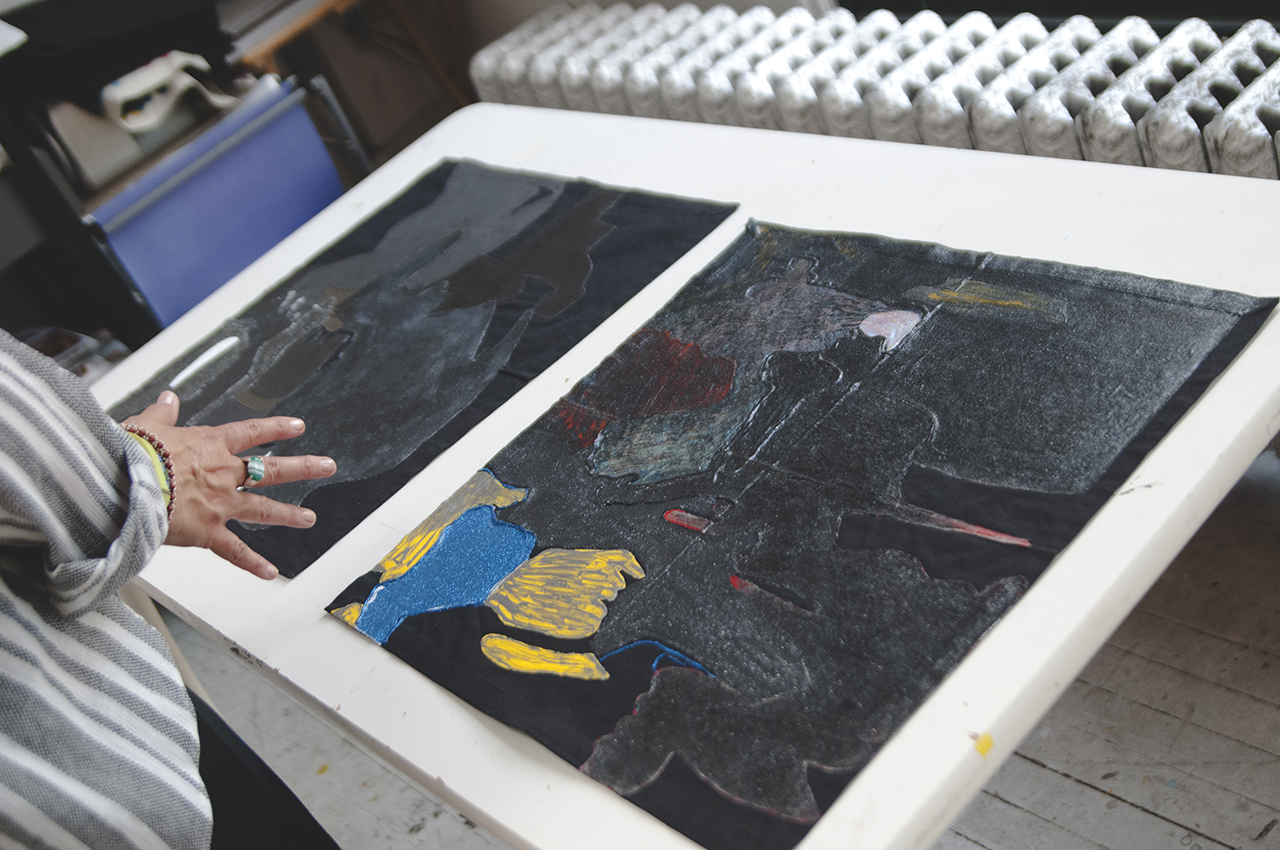Inside\Within is a constantly updating web archive devoted to physically exploring the creative spaces of Chicago's emerging and established artists.
Support for this project was provided by The Propeller Fund, a joint administrated grant from Threewalls and Gallery 400 at The University of Illinois at Chicago.

Search using the field below:
Or display posts from these tags:
3D printing 3D scanning 65 Grand 7/3 Split 8550 Ohio 96 ACRES A+D Gallery ACRE animation Art Institute of Chicago Arts Incubator Arts of Life audio blogging Brain Frame CAKE Carrie Secrist Gallery casting ceramics Chicago Artist Writers Chicago Artists Coalition Chicago Cultural Center Cleve Carney Art Gallery Clutch Gallery Cobalt Studio Coco River Fudge Street collage collection Columbia College Chicago Comfort Station comics conceptual art Contemporary Art Daily Corbett vs. Dempsey Creative Capital DCASE DePaul University design Devening Projects digital art Dock 6 Document drawing Duke University dye Elmhurst Art Museum EXPO Chicago Faber&Faber fashion fiber Field Museum film found objects GIF Graham Foundation graphic design Harold Washington College Hatch Hyde Park Art Center illustration Image File Press Imagists Important Projects ink installation International Museum of Surgical Science Iran Jane-Addams Hull House Museum jewelry Joan Flasch Artist's Book Collection Johalla Projects Julius Caesar Kavi Gupta Links Hall Lloyd Dobler LVL3 Mana Contemporary metalwork Millennium Park Minneapolis College of Art and Design Monique Meloche Museum of Contemporary Art Chicago (MCA) Museum of Contemporary Art Detroit (MOCAD) Museum of Contemporary Photography (MoCP) National Museum of Mexican Art (NMMA) National Resources Defense Council New Capital Northeastern Illinois University Northwestern University Ox-Bow painting paper mache Peanut Gallery peformance Peregrine Program performance photography PLHK poetry portraiture printmaking public art Public Collectors publications Renaissance Society risograph rituals Roman Susan Roots&Culture SAIC screen printing sculpture Sector 2337 Shane Campbell Silver Galleon Press Skowhegan Slow Smart Museum Soberscove Press social practice South of the Tracks Storefront SUB-MISSION Tan n' Loose Temporary Services Terrain Terrain Biennial text-based textile textiles The Banff Centre The Bindery Projects The Cultural Center The Franklin The Hills The Luminary The Packing Plant The Poetry Foundation The Poor Farm The School of the Art Institute of Chicago (SAIC) Threewalls Tracers Trinity College Trubble Club University of Chicago University of Illinois at Chicago (UIC) University of South Florida at Tampa Valerie Carberry Vermont Studio Center video weaving Western Exhibitions wood carving woodwork Yellow Book Yollocalli Arts Reach zinesInside\Within is produced in Chicago, IL.
Get in touch:
contactinsidewithin@gmail.com
Candida Alvarez's Embodied Biography
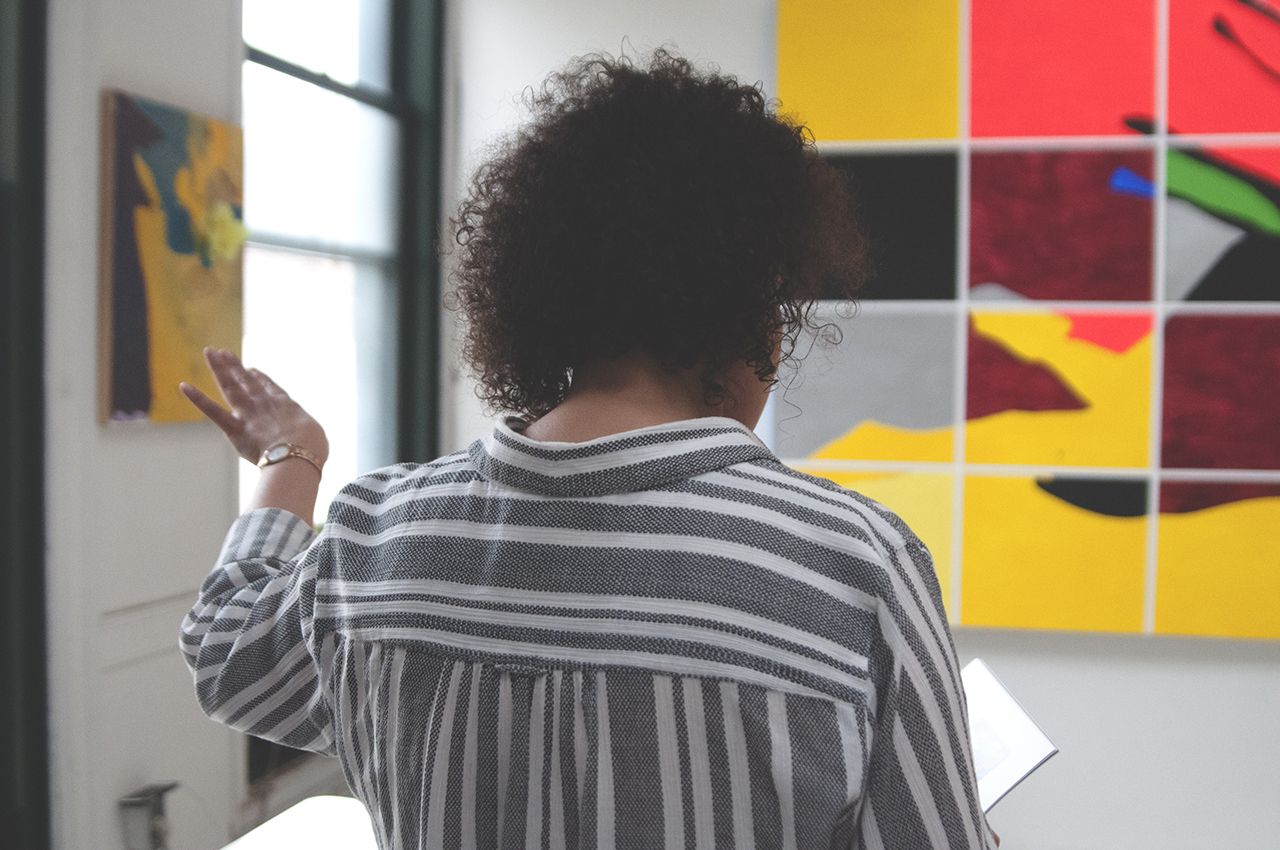
Candida gives herself over to each of her paintings, inserting her own historical references as well as that of the world around her into shapes that fragment on the canvas. Influenced by the attention-grabbing images on the front of the New York Times, Candida formats her works to express her current obsessions, also including merengue, cartoons, and words that refuse to leave her consciousness. Using cheap materials, Candida begins each work from a non-heroic place, using everything from hardware store paint to cloth dinner napkins.
I\W: Your inspirations are very pictorial, yet your paintings could be described as abstract. What pieces of your inspirations stay a part of your work?
CA: My work is so embodied that in my mind, it is not really abstract. I am retooling and reassembling a different kind of body, which is picture body. My work is such a fusion because it has these embedded bodies and skins that get shredded down and recomposed and serve the painting in different ways. Many times you wouldn’t see that as the viewer, but for me that is what helps me start each piece. When I enter the studio, the “I” leaves, as the world, leaving space for the painting. An archive of pictures, cultural artifacts, and oral stories are compressed into my paintings and drawings like a bibliography. The pictorial spaces in my work are informed by biography, daily events, synchronicity and alchemy. My work is conceptually driven within a studio practice where intention and content is deeply embedded in the optical body of the paintings. I am interested in the architecture of space or what holds the experience of space. Growing up in an urban environment, windows behave like a huge camera shutter, shifting constantly between a macro/micro lens perspective. Over time, I realized that this was a marker between my private life and everything else, giving me visibility, transparency and material for constructing my paintings formally. My aims in the studio are to listen and wrestle with the chatty variables that give life to a painting that embodies that time knowledge.
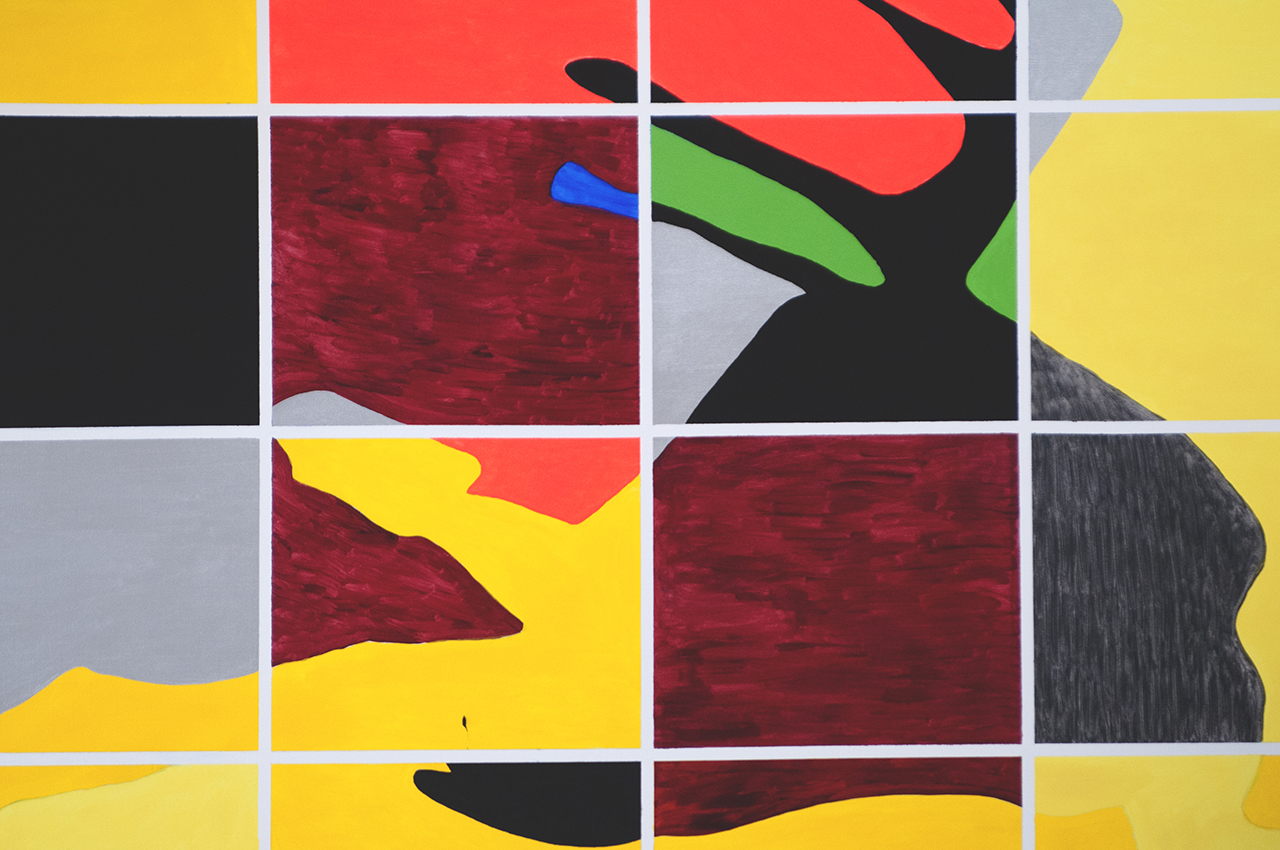
In what ways has your relationship to your mother and father influenced your painting systems?
There are various formal strategies that get threaded into the sieve of my daily practice, but I also use more conceptual strategies that have a cultural root. These often are borrowed from my relationship with my parents. For instance, my father taught me to play this game where you draw several vertical rows of dots down on a page and then you take turns to connect two dots at a time, so essentially you are building boxes from four connected points, and then you claim them with your initials. So it marks ownership or territory. I think about this whenever points meet in my work, like a recent work, I call “wonky.” I used white artist tape as a drawing tool and criss-crossed it across a black field of flashe paint. There are other pieces that incorporate letters and numbers. This way of working comes from my mother who would ask me for a number that was linked to the 26 letters of the alphabet. If I said “3,” she would say “C,” and then begin to conjure the names of friends and family members whose name began with that letter. So it helps me to start new paintings. I may create fragments of words that I can connect pictorially and simultaneously use the number that generates from the addition of all the letters as clues into color usage or repetition. So if I spell out the word “petite” I would have 6 bands of color, and wherever the letters repeat, so will the color. It is not apparent to the viewer, but these codes have been useful to me over the years. I use them when and where I need them. Recently I was reminded of a spanish word phrase: “dar luz” or “dar a luz” which means to give birth, or literally it means to “give light” or “give to light.” That word phrase has since flirted with me, so I decided to begin a painting with it.
How did growing up in an urban environment influence your work?
I like this idea of having a built body within the work. The paintings have this biography in them, this way of collecting data or building them with multiple parts or sources, like this studio building, or the building I grew up in. They were called the projects, low income apartments located in Brooklyn and now I live in Chicago, in another tall building. I love that vertical presence around me. It kind of looms, and it is like portraiture. I like embedding all of these elements in my work to surprise myself.

How does biographical information embed itself in your work?
That sense of biography is my link to something that is different. It is the only thing I can claim—that I have had this experience. For me, it is about finding real meaning in the process. In all of my work there is something going on that I am related to in some way, otherwise it is not that interesting to me. I am not interested in decoration or just making a painting to make it. There is always a subject or a collision of subjects that drives me through each piece. My sources are quite varied. There is a certain amount of casualness, or serendipity, but it may also be connected to a particular work of historical significance that I am using to explore more in depth. For example, a De Kooning, a Matisse or a Robert Thompson. I have also used cartoons, like the Caped Crusader, Wonder Women or an alligator animation found in Japan. For years, I worked from images taken out of my parents home bible created by James Tissot or front page photos from the New York Times. My process is like driving down a pathway, but I am not sure what I am going to bump into. I aim to be surprised at the end of the day.
Growing up in an urban environment, windows behave like a huge camera shutter, shifting constantly between a macro/micro lens perspective. Over time, I realized that this was a marker between my private life and everything else, giving me visibility, transparency and material for constructing my paintings formally.
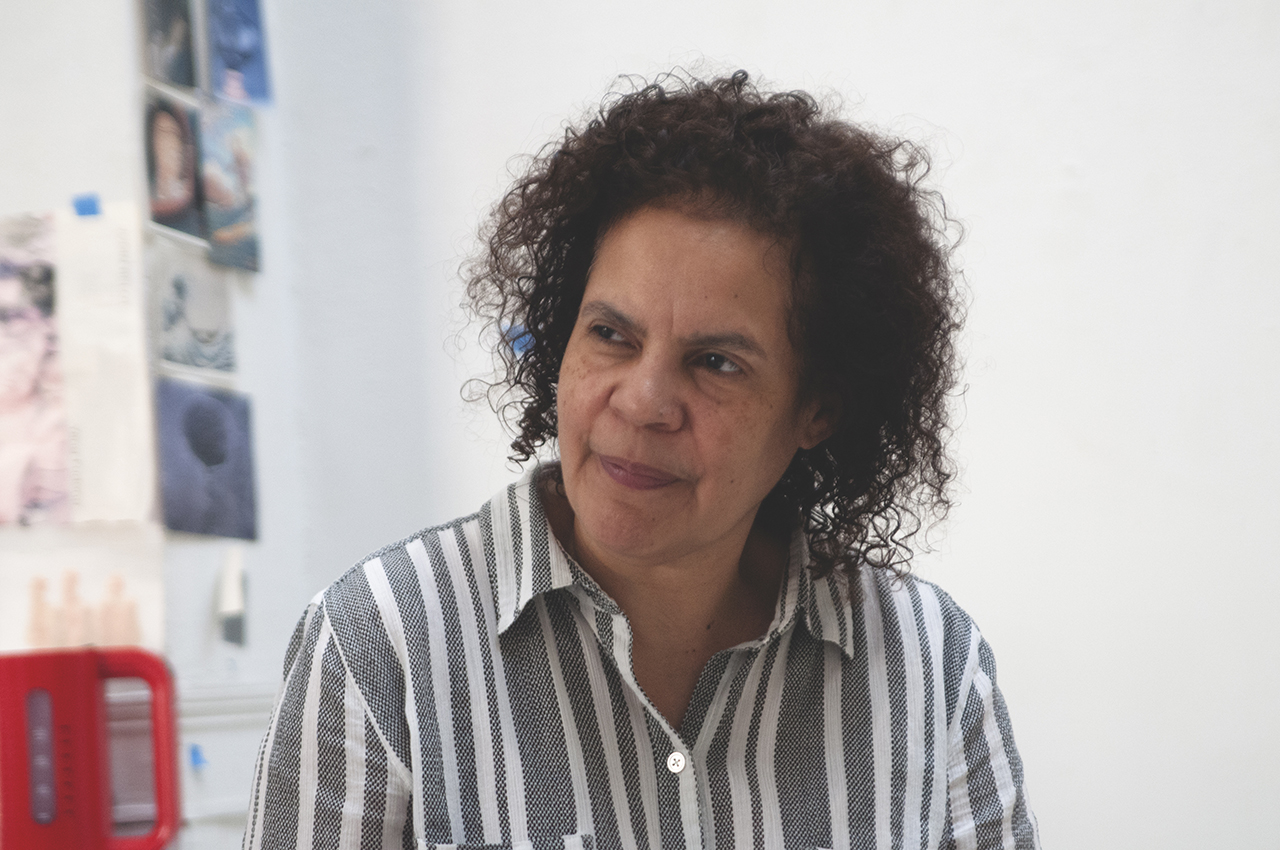
Does your recent use of taping off sections in your paintings recall your older work you produced on individual panels?
It kind of recalled itself. It was this moment when the taping made sense to me, it reminded me of pieces that I did in the ’90s where a painting was put together in parts. I now use the tape as a drawing tool on my paintings which makes it more optical, but in a different way. I like when it goes awry. Over the years, you become really skillful with processes and materials. I try to push past that by adding new materials to the mix, so that I can get clumsy and angry at the mess that forms. A lot of the earlier compositions were built shape against shape. I chose certain colors to allow the eye to jump across the visual boundaries that formed. I love that flirtation with weight. What is in front? What is behind? What is in-between?
Do you make works that you feel are meant for yourself, and others which are meant for the public?
I don’t really feel like the work is for me or the work is for the public. I feel like the work just has to be made and of course having a conversation surrounding it is a true gift. However, you can’t linger on the future because you don’t know where it’s going to go after you make it. You just do it and remain in the present moment. That process of making doesn’t want to be owned. Painting is a place to negotiate terrain, as aspects of play allow for risks to take place, while questions get raised, and the process flirts with losing control and provoking discomfort. I am always very conscious about the moves I make and the process builds from how I notice how changing my mind shifts from color to form. Often I start with a picture that I may enlarge or trace over vellum and that image slowly dissolves in the process. In terms of the color application, I like to rely on it as a compositional building block, to tease, hold and seduce the eye around the entire painting. I may deliberately leave a section unpainted, revealing the drawing line, to create a more transparent moment which reveals the white ground color. I like it to think of it as the navel of the work.
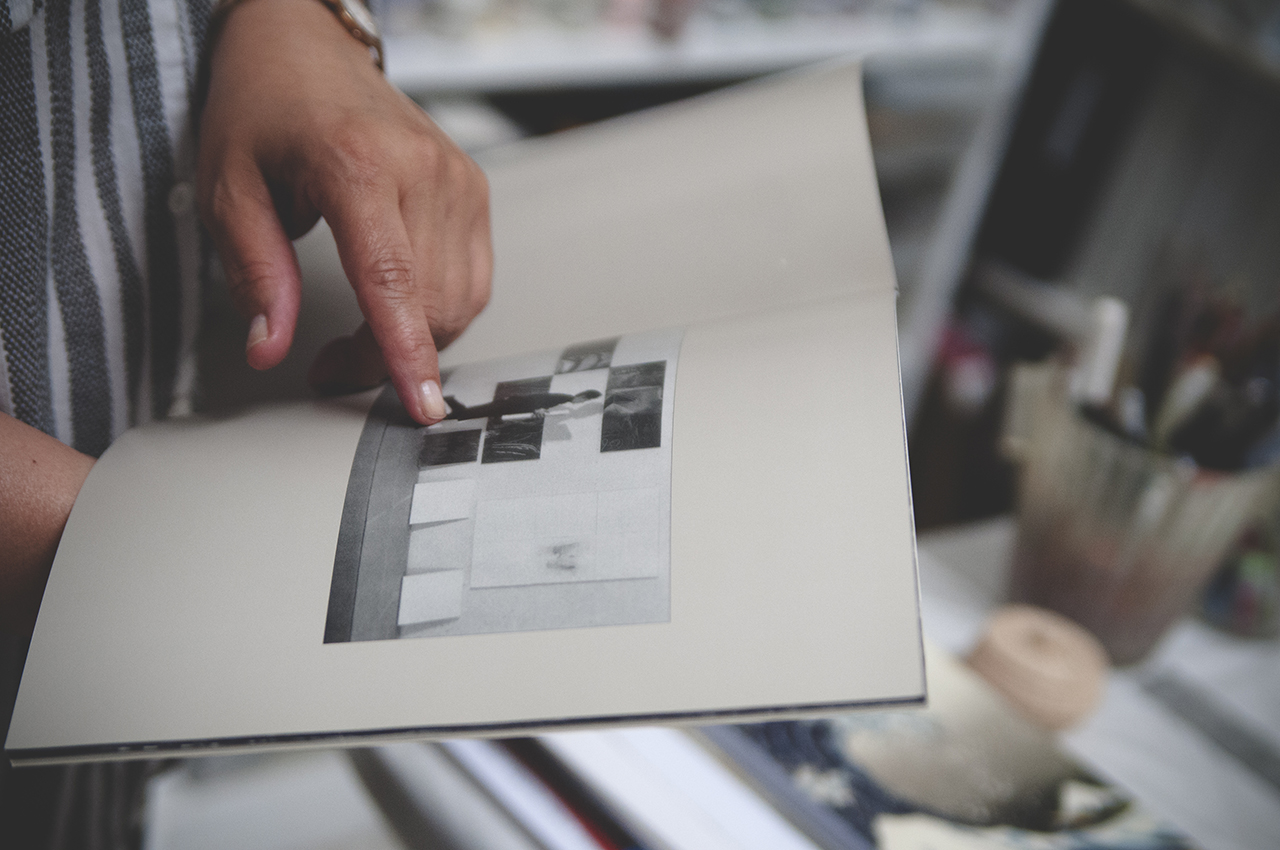
What do you enjoy about the cheapness of materials you have been using lately (dinner napkins, hardware store paint…)?
I enjoy finding material in the world that is easily available, accessible, and can be repurposed. It is cheaper than most art supplies and just begins from a starting point which is non-heroic. It often has a different textural body, and diverges from the common colors and textures of materials found in art stores.
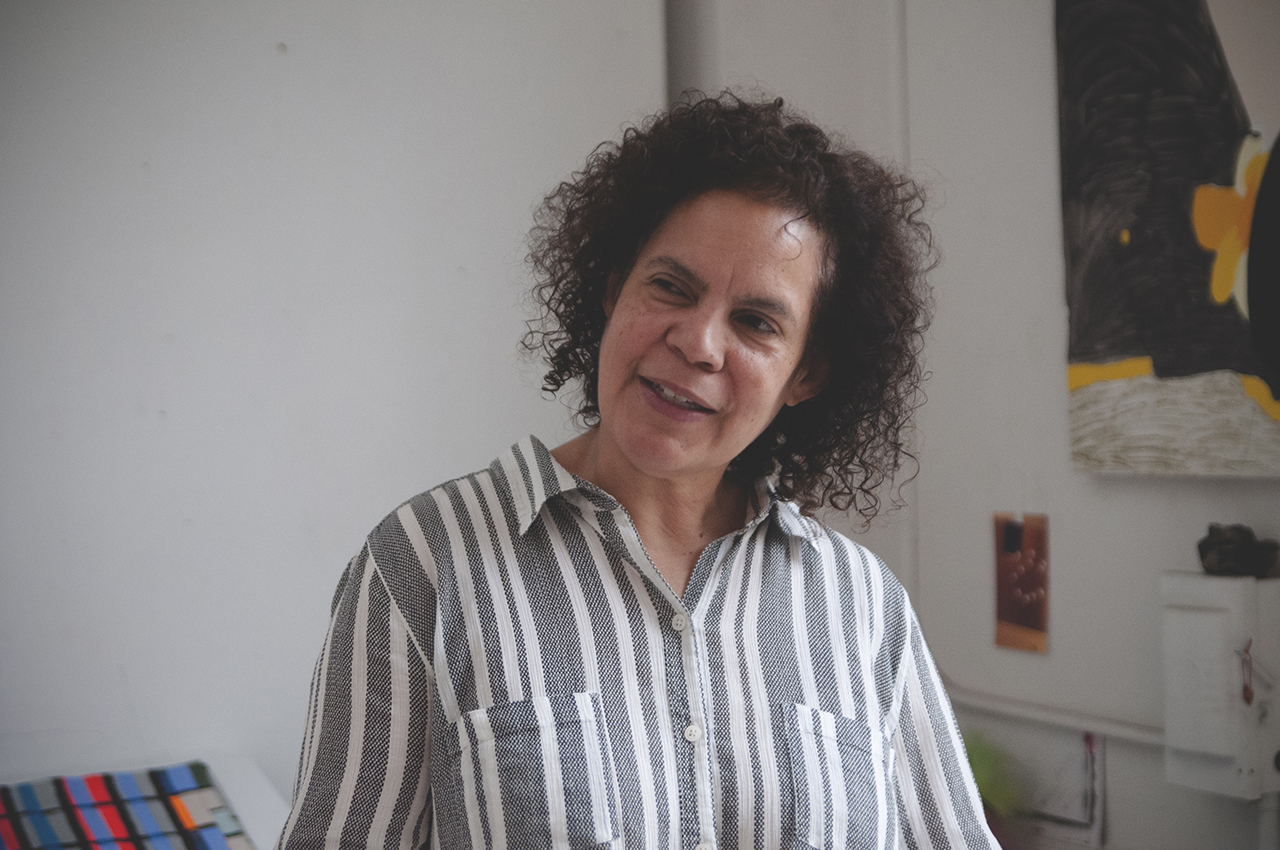
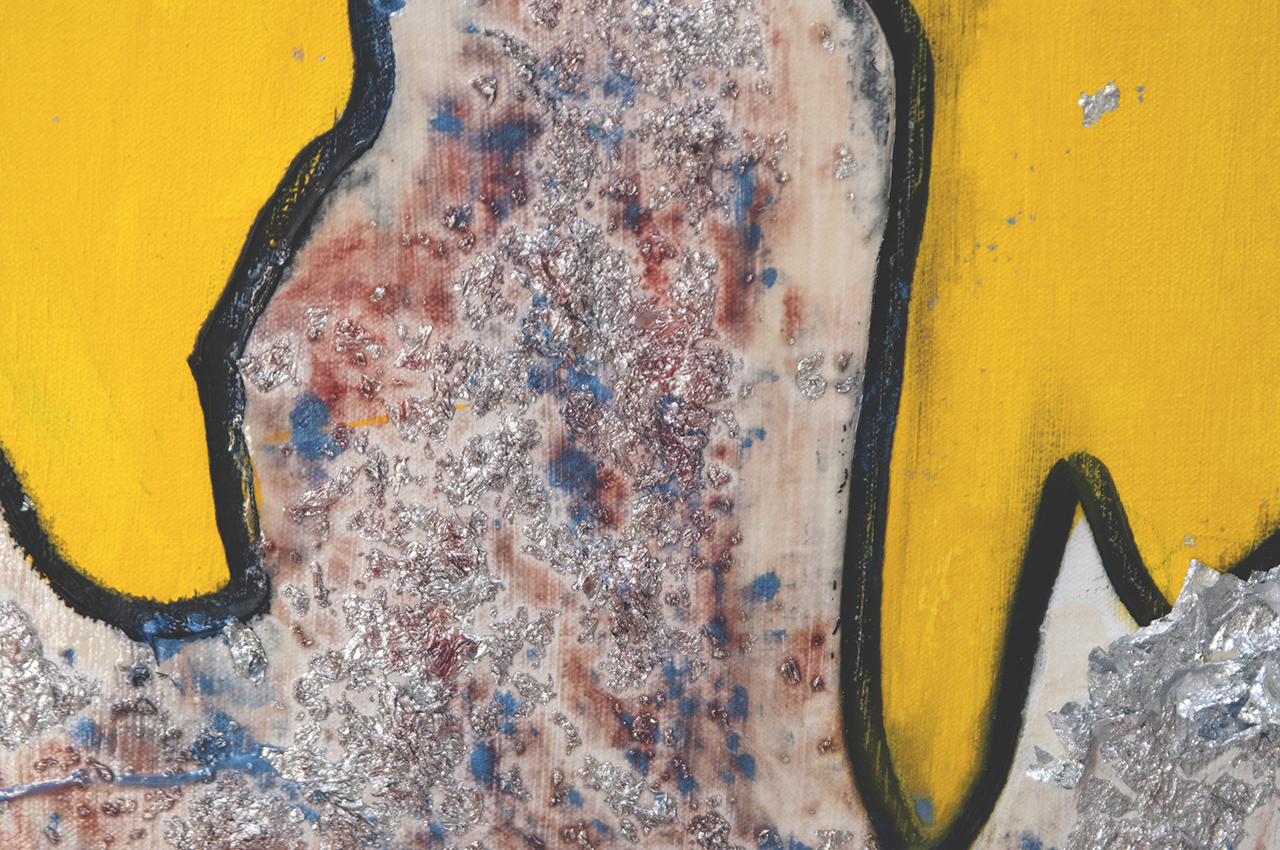
How does your practice reference dance?
Strangely, I don’t listen to music while I work. Instead, I listen to artist interviews, TED Talks or a news channel. Afro-Caribbean music lives in my cellular body, as it always has been an important part of my family upbringing. Listening also meant dancing to merengue, mambo, cha cha cha, bolero, pachanga, etc. So I listen as my body moves to the music. There is a special liberation of sorts. It is magical. I love to twirl with a partner or alone and that becomes an abstract space where the dancers get lost in that flow. It is like poetry. You hear the words, but you find a space somewhere between those words from which to linger. That is my relation to dancing. It makes my heart spin. It can be a metaphor of sorts as I spin through my relationship to various strategies with painting. I believe we are all so multidimensional, and I want to be all of the parts I need to be. Painting gives me a language that is open-ended, and I can make or do or look however I want.
